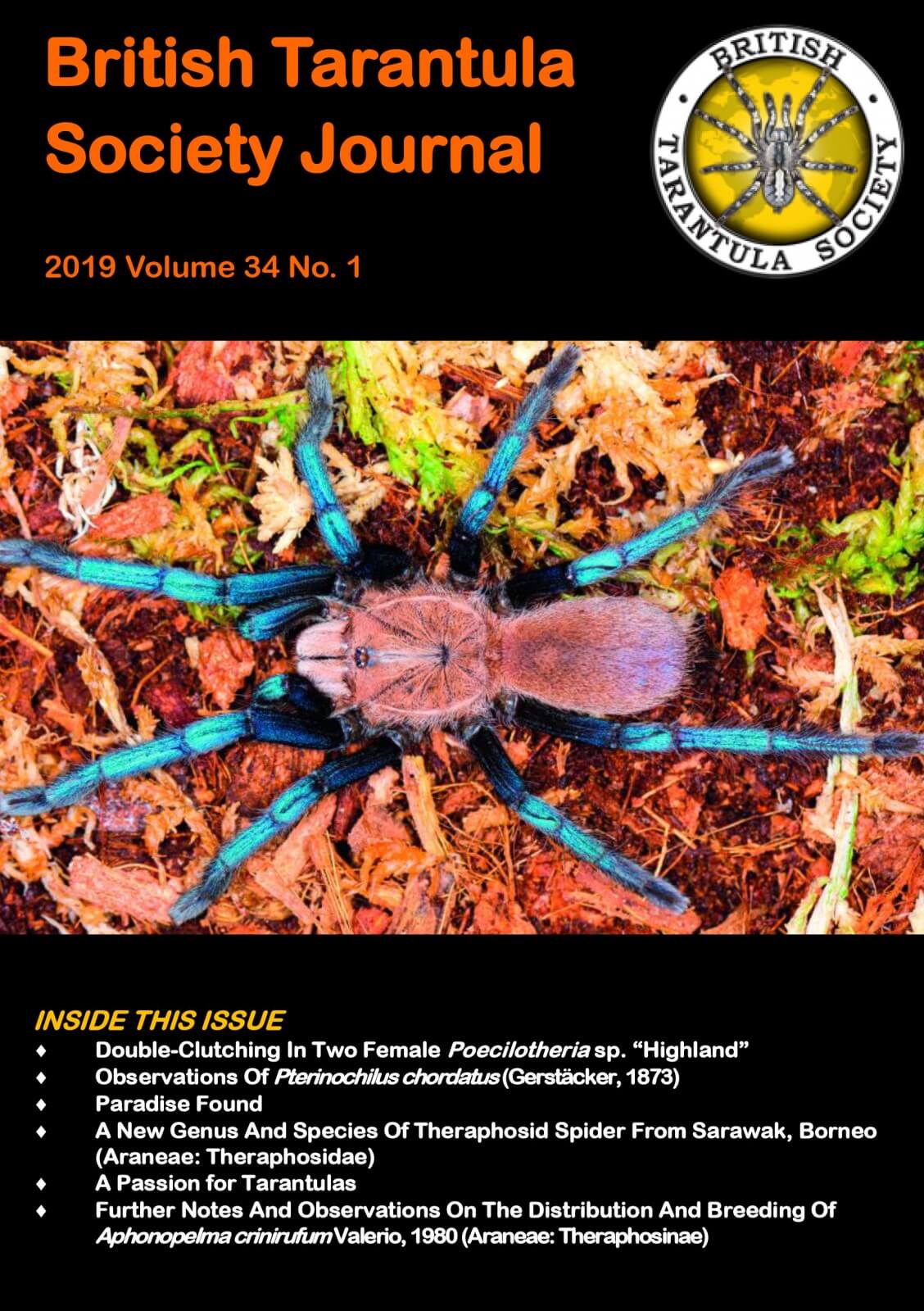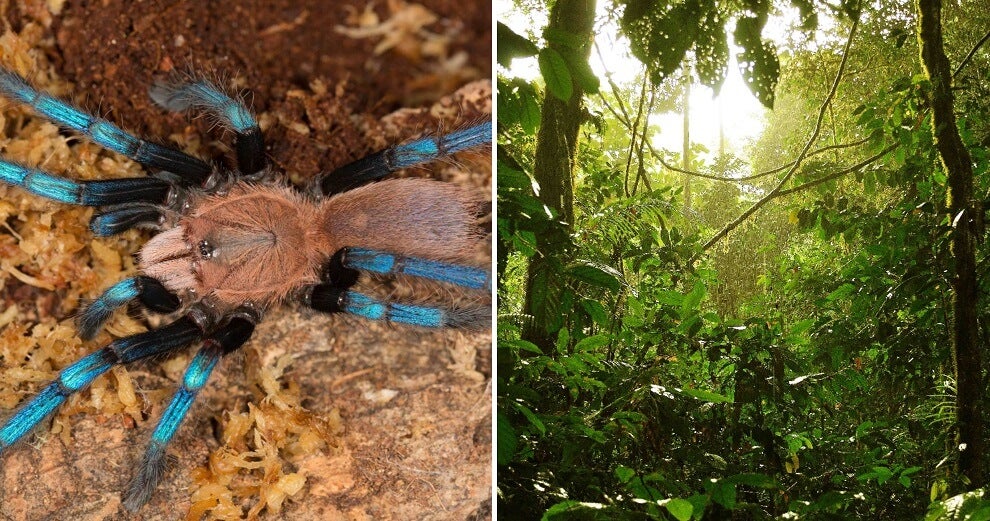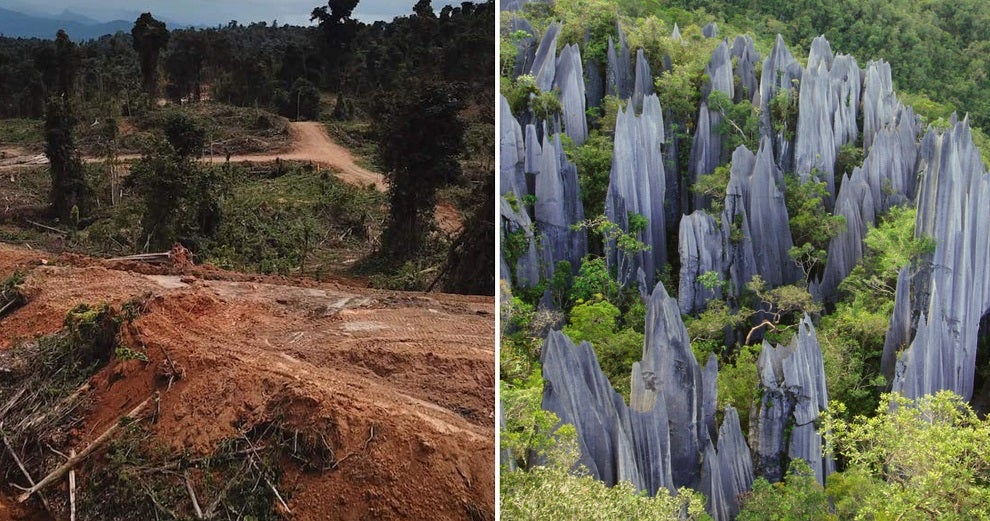Just last week, the internet was abuzz after news of a newly discovered species of spider native to Sarawak began to surface.
The species is known as the Birupes simoroxigorum (blue tarantula) and was described in an article published in The Journal of the British Tarantula Society by UK-based arachnologists affiliated with Hope Entomological Collection, Oxford University Museum of Natural History.
The two scientists, Ray Gabriel and Danniella Sherwood, reportedly classified the blue tarantula as a new species in their article and part of its scientific name, simoroxigorum, is a combination of names of the children (Simon, Roxanne, and Igor) of the three European collectors who provided the specimens.

Source: British Tarantula Society
However, according to Science Magazine‘s report on this, the three European collectors were believed to have captured these blue tarantulas in Sarawak and transported them to Europe. These collectors reportedly did so without a permit, according to the Sarawak Forest Department.
Sarawak-based wildlife photographer Chien Lee along with German photographer Lars Fehlandt reportedly found the blue tarantula in the forests of Sarawak in September 2017, six weeks before the European collectors did.
The science publication also noted that the collectors’ expedition to Sarawak between October and November 2017 may have been due to them discovering Chien Lee’s and Fehlandt’s photos of the blue tarantula.
The photographers reportedly posted their discovery online along with the name of the nearby city where they had found it, which Chien Lee now regrets.
Selenocosmiinae sp.Biru without flash
Posted by Borneo Tarantula Expedition on Tuesday, August 28, 2018
Two of the collectors are now reportedly advertising the blue tarantulas for sale via their online stores, pricing them at USD$300 (approx. RM1,220).

Source: Facebook
Meanwhile, one of the arachnologists, Danniella Sherwood, told the magazine that she had no reason to believe that the specimens they received were illegal, but did not respond when Science Magazine asked her for records of permits for the transport of this species.
News of this alleged smuggling highlighted the issue of “biopiracy“, which caused a lot of concern among Malaysian and international netizens, who expressed their outrage over the potential illegal trade of local fauna.
Biopiracy refers to when researchers or institutions use knowledge and resources from indigenous communities or exploit the cultures this knowledge comes from, particularly from marginalised communities or relatively lower-income nations.
the newly discovered blue tarantula that is native to Sarawak, Malaysia, was illegally traded to Europe and named after the European collectors' children, Birupes simoroxigorum. this biopiracy is alarming, unethical & has to stop!https://t.co/JSgHUOKcMT
— Jasmin ? (@JasminIrisha) February 28, 2019
This is Chien Lee, the Malaysian naturalist who first documented the blue tarantula. Before those three poachers from UK & Poland went to Sarawak to grab a specimen for themselves.
Oxford arachnologists and @morethanadodo, you guys are cancelled. Zero credibility. pic.twitter.com/SXlhWqjujd
— Lt M Elona binti Muskri (@yours_heidi) March 2, 2019
I’m equal parts thrilled at this awesome discovery, mad that it was removed illegally, and glad to see Science drawing attention to the crime. https://t.co/9iKHadaQyn
— Jennifer Sheridan (@JenASheridan) March 2, 2019
Interesting to see how people react in the blue tarantula news. Some will say ‘who cares’ when it clearly unethical things to do claiming the discovery using wrong way. It’s always ok if white people do it right? What if we turn the tables? Obviously will be blamed very badly.
— Norhasliza Yusof (@norhaslizayusof) March 1, 2019
"New" species, tuh. Not to the locals it's not!
— PandaEyes (@kraftwurker) March 1, 2019
The right thing to do is for the authors to retract their article. As scientists we have a social responsibility. This body of work is unethical, irresponsible, disrespectful, and colonialist. All associated parties owe an apology to the people of Malaysia.
— Furaha Asani (@DrFuraha_Asani) March 2, 2019
Read Science Magazine’s entire report about this here.
What are your thoughts on this? Let us know in the comments section.
Also read: Sarawak’s Mulu Rainforest is Being Threatened by An Oil Palm Plantation, Here’s How You Can Help







































